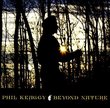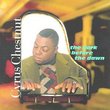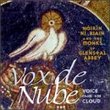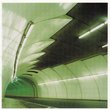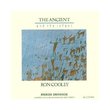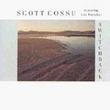| All Artists: Michael Praetorius, Samuel Scheidt, Johann Hermann Schein, Paul McCreesh, Gabrieli Consort Title: Praetorius - Mass for Christmas Morning Members Wishing: 0 Total Copies: 0 Label: Archiv Original Release Date: 1/1/1994 Re-Release Date: 10/11/1994 Genres: Special Interest, Classical Styles: Holiday & Wedding, Opera & Classical Vocal, Chamber Music, Historical Periods, Baroque (c.1600-1750), Sacred & Religious Number of Discs: 1 SwapaCD Credits: 1 UPC: 028943925020 |
Search - Michael Praetorius, Samuel Scheidt, Johann Hermann Schein :: Praetorius - Mass for Christmas Morning
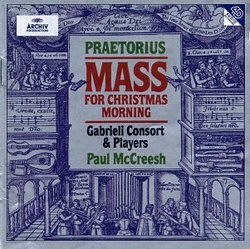 | Michael Praetorius, Samuel Scheidt, Johann Hermann Schein Praetorius - Mass for Christmas Morning Genres: Special Interest, Classical
This exhilarating disc is arguably the most important record Paul McCreesh has made. Praetorius, the first great composer of Lutheran church music, wrote countless pieces based on popular Lutheran chorale tunes, ranging fr... more » |
Larger Image |
CD DetailsSynopsis
Amazon.com essential recording This exhilarating disc is arguably the most important record Paul McCreesh has made. Praetorius, the first great composer of Lutheran church music, wrote countless pieces based on popular Lutheran chorale tunes, ranging from simple harmonizations to flamboyant fantasias for multiple choirs with instruments. He also provided detailed instructions regarding various performance options--including ways to involve the congregation. Here, for the first time, McCreesh puts these instructions into practice, reconstructing an extravagant Christmas service. We hear elaborately scored Mass movements, simple harmonizations, the Creed (with Luther's own music), lusty congregational singing, and spirited organ improvisations. Many of the Christmas chorales Praetorius used are still well-known today, including Wachet auf (Sleepers wake) and In dulci jubilo, which gets a magnificent setting with trumpet-and-drum fanfares. --Matthew Westphal Similar CDs
Similarly Requested CDs
|
CD ReviewsUnique, Excellent holmmd@aristechchem.com | Pittsburgh, Pennsylvania, USA | 11/13/1998 (5 out of 5 stars) "If this is what music was like in the 1600's, we are all living in the wrong century! My eleven-year-old has started to hum tunes from this recording.Paul McCreesh has reconstructed a Lutheran Mass for Christmas Morning as it might have been celebrated around 1620 using music by Praetorius, Scheidt and Schein. Performed in Roskilde Cathedral, Denmark with soloists, choirs, original instruments and organ, the music ranges from the most delicate (single boy soprano) to all stops pulled out. I have never heard anything like it. The lyrics are all in German and Latin, but good translations are in the notes. The music is unique (though some of the hymns are still common in Churches today). Performance is tightly controlled, and flawless. Dynamics go all the way from ppp to FFF, sometimes quite suddenly.Some of the hymns alternate German and Latin verses. Evidently this was common in northern Germany back then. The last hymn, In Dulci Jubilo, (Good Christian Men Rejoice) will blow your socks off, and perhaps blow out your windows if you don't watch the volume control. Those 17th century Lutherans were really joyous on Christmas morning.This is my favorite recording." If Lutheran worship still sounded like this... Clinton D. Davis | Norman, OK United States | 06/11/2002 (5 out of 5 stars) "This CD absolutely blew me away. It truly is a religious experience, and should do a lot for us church musicians who want to expand our repertoire into exciting but still traditional areas. The music is, well, heavenly. It still sounds as fresh, exciting and liberating as the day it went into the choir loft, and I can only imagine that worship like this was what really sent the Reformation raging through Europe even long after Luther was gone. For example, Praetorius' setting of the old Lutheran Sanctus "Isaiah the prophet": well, let's just say, when it gets to the line "and all the house was filled with billowing smoke", you just have stand up or you'll wet your pants, no joke. Paul McCreesh did a wonderful job of making this feel like you are sitting in church, not in a concert hall, and the worship experience leaves you hungry for more. It really feels like Christmas eve. Hey ELCA bishops, listen to this disc and learn a thing or two about what it REALLY means to be Lutheran...bring on the long blacks and ruffles, bring on the chorales, bring it all on, ELCA, and some of us Episcopalians of Scandinavian descent might just come back..." Enthusing! Manfred Mornhinweg | La Serena Chile | 02/07/2004 (5 out of 5 stars) "I wonder what kind of tool McCreesh used to conduct this performance? Was it a magic wand? No other of the 20+ CDs purchased lately has been able to produce such a riveting effect on me!What McCreesh has done here is an imaginative reconstruction of a late Renaissance Mass, based mostly on collections by Praetorius (such as Polyhymnia caduceatrix et panegyrica, Musae Sioniae, Missodia Sionia, Urania, and the Puericinium), but also including some works of Samuel Scheidt, Johann Hermann Schein, and Lucas Osiander. And this compendium is performed with forces that combine the refined with the massive: The singers of the Gabrieli Consort include such "secret tip" names as Rodrigo del Pozo, while the choir forces range from a favoriti choir over a fine boychoir all the way to a massive choir built up by the already mentioned groups plus the congregational choir and several amateur choirs. All this is supported on period instruments, which include a chamber organ and the truly marvelous organ of Roskilde Cathedral, which is so authentic that it uses hand-blown bellows!These ample forces are employed in a highly varied way. A solo treble (Anders Engberg-Pedersen) opens the performance with a faraway processional. Soon later, in the introit, the full choir sets the other end of the dynamics scale. In the gradual hymn each of its nine verses is performed with a different array: Baritone solo for the first, congregation and instruments with cathedral organ for the second, choirboys, strings and harpsichord for the third, and so on, until the last verse is performed with all hands, in twelve voices.From the Puericinium, a collection of music for boy's voices, we get to hear the "Quem pastores laudavere", one of Praetorius' better known works, commonly referred to in Lutheran tradition as "the Quempas". Four trebles alternate with the full choir and ensemble in an enthusiastic rendering.The magic keeps flowing for a full 79 minutes, until the apotheosic end, "In dulci jubilo", performed by five "choirs" which include everything from trebles to trumpets and drums.
This CD carries my highest level of recommendation, and is the newest addition to the "best of the best" list on my web site." |

 Track Listings (23) - Disc #1
Track Listings (23) - Disc #1

